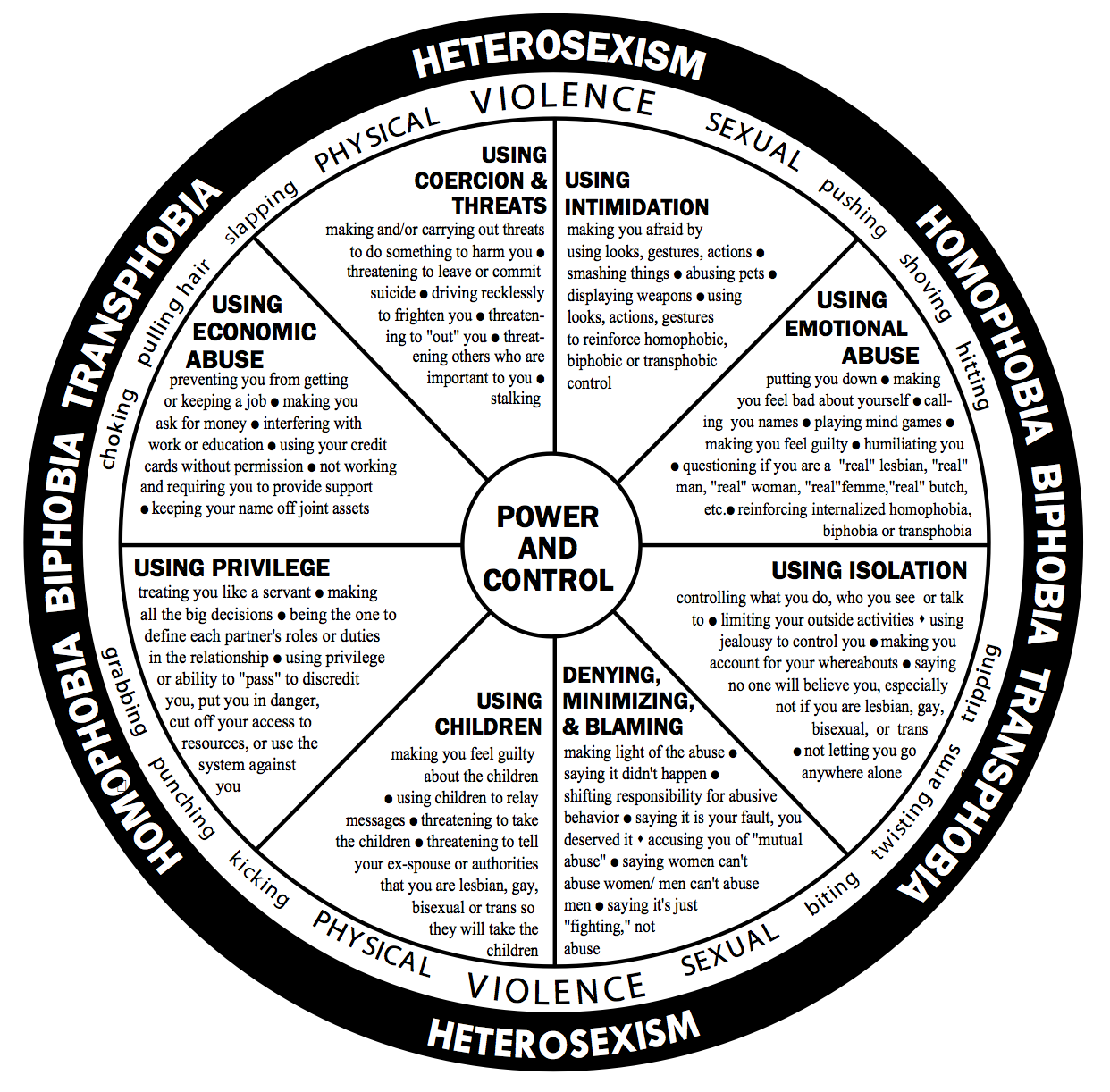V I O L E N C E & A B U S E
Intimate Partner / Sexual / Domestic / Family
These are two well-known graphics outlining the types of abuse that can occur in intimate relationships. The first (above) is aimed at Heterosexual relationships.
As you can see, PHYSICAL violence is a small part of abuse, and is illustrated around the outside of the wheel. The internal segments illustrate the PSYCHOSOCIAL & RELATIONAL behaviours that can occur in abusive relationships.
The above second image expands on these themes to include specific issues for LGBTQIA+ people and relationships.
An important aspect for LGBTQIA+ people is the new outer circle indicating the broader heterosexism, and homo/trans/bi-phobia that further impacts on an individual and their relationship.
And yes, intimate partner violence exists in same-sex relationships. It can even be more hidden, shame inducing, and stigmatized or normalized, for a complex web of reasons. People in the LGBTQIA+ community may assume that it’s just ‘The way it is’, may fear stigma in reporting, and may not wish to feed discriminatory perceptions of the LGBTQIA+ community. Some survivors describe it as like being ‘In another closet’.
VIOLENCE AND ABUSE OF ANY KIND IS NEVER ACCEPTABLE OR JUSTIFIABLE.
As a Nurse, I am fortunate to meet and assist people experiencing intimate partner and family violence on a fairly regular basis. The victims I meet come from all walks of life, and all sexualities and genders. While intimate partner abuse is more common in certain demographics, it can and does happen to anyone.
If any of this resonates with you – whether for yourself, a friend or a loved one – TALK TO SOMEONE. It’s really hard, but there is help and a better life out there, and victims deserve to be free from harm.
NO ONE deserves abuse.
Some Australian contacts:
Lifeline Australia: 13 11 14 or www.lifeline.com.au
Sexual Assault, Domestic & Family Violence Support Hotline:
1800 RESPECT or 1800 737 732
LGBTQIA+ resources: http://www.anothercloset.com.au/



